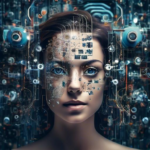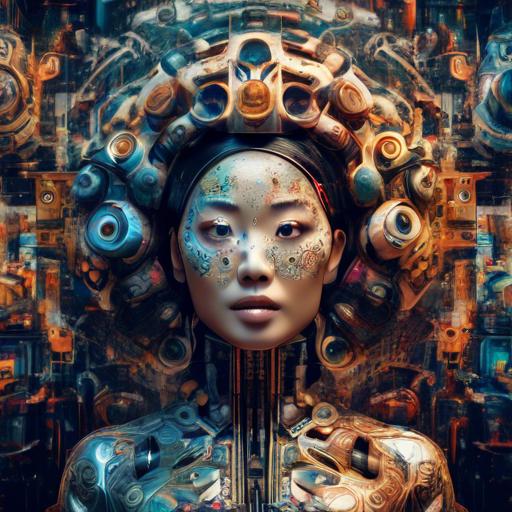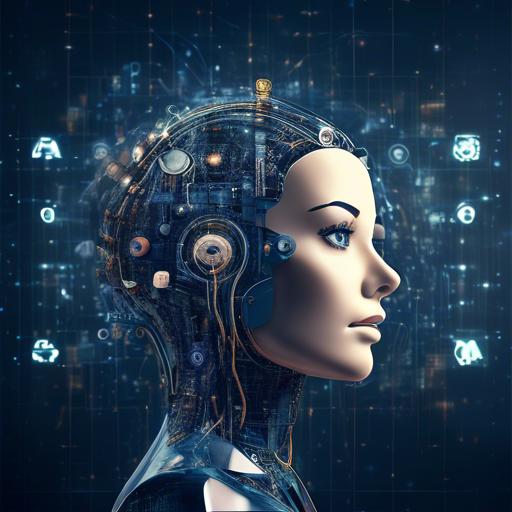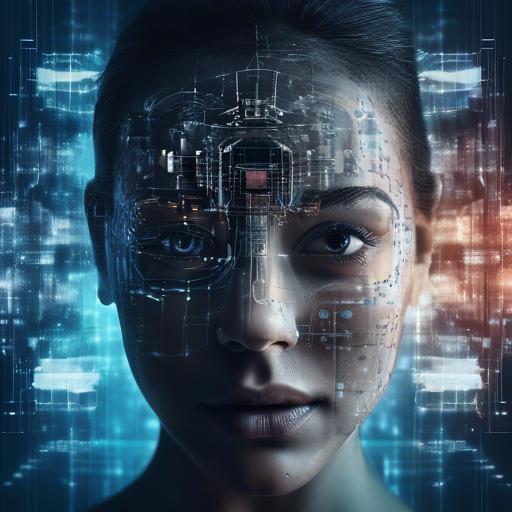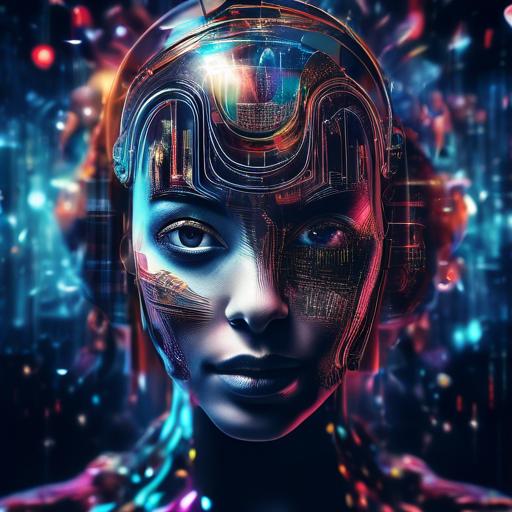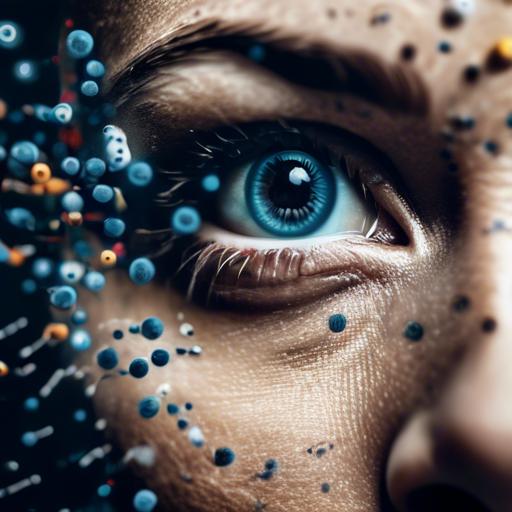In a world where algorithms compose symphonies, machines paint masterpieces, and software scripts captivating narratives, one might wonder if silicon can truly mimic the sparks of human genius. The marriage of technology and artistry has birthed an era where creativity is no longer the sole dominion of human minds but shared with artificial intelligences that sculpt, write, and compose. As we stand on the cusp of this revolutionary fusion, it invites us to not just marvel at the dazzling capabilities of automated creativity, but also to ponder the deeper, often unsettling, ethical questions it evokes. Can a machine understand the nuanced dance of human emotions it attempts to orchestrate? Do automated creations dilute the authenticity of human-driven art, or do they add an invaluable dimension to our collective cultural tapestry? This article aims to navigate these murky waters, offering insights and encouraging dialogue on the ethical implications of a brave new world where creativity and code collide.
Table of Contents
- Navigating the Moral Maze of Machine-Made Art
- Balancing Human Touch and Digital Innovation
- Cultural Heritage: Preserving Authenticity in a Digital Age
- Profit vs. Principle: Ethical Business Models of Automated Creativity
- Legal Quandaries: Ownership and Intellectual Property in AI Creations
- From Inspiration to Infringement: Protecting Human Artists’ Rights
- Closing Remarks
Navigating the Moral Maze of Machine-Made Art
Automation has been integral to various industries, and now its tendrils have stretched into the fertile fields of art. **Automated creativity** might promise efficiency, but it also brings forth a deluge of ethical quandaries.
**Authenticity** is at the heart of artistic discourse. Traditionalists argue that art crafted by human hands and emotions carries an authenticity that can’t be replicated by algorithms. But what if **the art produced by machines** resonates deeply with audiences? Does the absence of human touch render it less genuine?
- Who owns the art created by machines?
- Is it the programmer, the user, or the machine itself?
- Should we frame AI-generated art as a collaboration between human and machine?
This labyrinth extends further when discussing **fair use and copyright**. Machines can be taught using thousands of pieces of existing art, but where do we draw the line between inspiration and plagiarism? The table below delves into potential ownership scenarios:
| Scenario | Possible Owner | Implications |
|---|---|---|
| Art created solely by an AI | Developer | Potential legal disputes |
| Art created with significant human input | Human Artist | Recognition of human creativity |
| Art primarily based on other artists’ works | Copyright Holders | Plagiarism concerns |
Lastly, let’s talk about the emotional connection to machine-made art. **Can an algorithm understand and replicate the depths of human experience and emotion?** While some might argue machines lack the soul to create ”true” art, others propose that the emotional response of the audience is what truly matters.
In this dynamic juncture of art and technology, clarity may not come easy. However, by engaging with these ethical implications, we can ensure that the integration of machine-made art into society is done thoughtfully and respectfully.
Balancing Human Touch and Digital Innovation
In the ever-evolving landscape where technology meets human creativity, finding the right equilibrium is crucial. While **automated creativity** offers unprecedented possibilities, it also raises ethical questions about the value of human touch. A major consideration is how to ensure that digital innovations enhance rather than overshadow our inherent creative instincts.
Imagine a world where art, music, and writing are generated at the click of a button. While the convenience is undeniable, there’s an undercurrent of concern over the **authenticity** and **emotional depth** of such works. Authenticity, after all, stems from the imperfections, emotions, and unique perspectives that only human beings can offer. Can an algorithm replicate the raw emotional journey of an artist? This is where technology might hit its limit.
Consider these points for balancing human touch with technology:
- Collaboration over Replacement: Strive for systems where AI tools complement the human creative process instead of replacing it.
- Ethics in Programming: Ensure the underlying code respects the diversity and complexity of human creativity.
- Value Human Insight: Human perspectives and emotions should guide the final creative outcome, maintaining genuine connection and relatability.
To give this balance a more tangible outline, let’s look at a comparison:
| Aspect | Human Creativity | Automated Creativity |
|---|---|---|
| Emotional Depth | High | Variable |
| Speed | Low | High |
| Uniqueness | Often Unique | Pattern-based |
Understanding these differences helps us navigate the intersection of human touch and digital innovation with care. Encouraging ethical practices ensures that we harness the full potential of both realms to create works that are not only efficient but also resonate on a deeply human level. This balanced approach can redefine creativity, making it a synthesis of human ingenuity and technological prowess.
Cultural Heritage: Preserving Authenticity in a Digital Age
The integration of automation and artificial intelligence in creative industries presents both opportunities and challenges. While advanced algorithms can produce striking pieces of art, literature, and even music, the preservation of **cultural heritage and authenticity** remains at the forefront of ethical considerations. The digitization and automation of cultural expressions must be handled with care to prevent the erosion of their true essence.
- Understanding Authenticity: Cultural heritage is not just about tangible artifacts but also intangible traditions and practices. Automated creativity tools need to be developed with a deep understanding of these subtleties to maintain the integrity of cultural expressions.
- Ethical Use of Data: AI systems often require large datasets to function effectively. It’s essential to ensure that these datasets are ethically sourced and respect the communities they represent, preventing misuse or cultural appropriation.
- Representation Matters: The advisory panels and development teams behind automated creative tools must include diverse voices. This inclusivity ensures that the outputs are more representative and sensitive to various cultural narratives.
| Aspect | Automated Creativity | Human Creativity |
|---|---|---|
| Speed | High | Variable |
| Authenticity | Potentially Lacking | High |
| Cost | Lower | Higher |
The challenge lies in finding a balance between innovation and preservation. Automated tools can support and enhance human creativity, enabling artists to focus on more complex and nuanced aspects of their work. When used responsibly, these technologies can help document and rejuvenate traditions that may otherwise be at risk of fading into obscurity.
Collaboration is key. By fostering partnerships between technologists, cultural custodians, and creators, we can ensure that the fusion of technology and tradition enriches rather than diminishes our cultural heritage. Together, we can leverage the power of automated creativity to safeguard the rich tapestry of human expression for future generations.
Profit vs. Principle: Ethical Business Models of Automated Creativity
In today’s rapidly evolving digital environment, the pressing question is how companies can balance **profit maximization** with **ethical principles** when deploying AI-driven creative tools. The utilization of automated creativity raises significant ethical dilemmas that challenge traditional business philosophies.
- Transparency vs. Exploitation: Companies must decide whether to fully disclose the use of AI to their customers or risk exploiting consumer trust to gain competitive advantages.
- Ownership and Authorship: Who owns the creations produced by AI? The delineation of intellectual property rights becomes murky, as does the recognition of creative contributions.
- Job Displacement: Automation can streamline processes but often at the cost of creative jobs. The challenge lies in finding a balance that acknowledges and compensates for human creativity.
One step towards crafting an ethical business model involves clearly defined guidelines and policies. Transparency isn’t merely a buzzword; it’s a practice that builds trust and loyalty.
| Principle | Implementation |
|---|---|
| Transparency | Regular updates about AI usage in business processes and content creation. |
| Fair Compensation | Providing royalties or fees to human collaborators where applicable. |
| Ethical Oversight | Forming committees to oversee the ethical implications of deploying AI technologies. |
By addressing these challenges with **intention and accountability**, companies not only safeguard against potential pitfalls but also pave the way for more **sustainable** and **respectful innovation**. It becomes a symbiotic relationship: as AI enhances creativity, ethical considerations ensure that this advancement benefits society at large.
Legal Quandaries: Ownership and Intellectual Property in AI Creations
In the intersection of legality and creativity, the question of ownership over AI-generated works looms large. As AI systems become increasingly sophisticated, they’re no longer just tools but creators in their own right. This raises the pivotal question: **Who owns the creations generated by AI?**
Traditionally, copyright law has safeguarded human authors, ensuring they receive recognition and financial benefits from their creations. However, when an AI model—completely devoid of human intervention—produces artwork, music, or literature, assigning ownership becomes murky. Is it the developer of the AI, the user who inputs data, or the AI itself, albeit a non-human entity? Legal experts are currently struggling to untangle these scenarios, and no clear consensus has yet emerged.
- Developer Ownership: Does the creator of the AI model hold proprietary rights over all outputs?
- User Ownership: Should the rights belong to the individual providing data and directives to the AI?
- Joint Ownership: Could a shared ownership model between developers and users offer a balanced approach?
- No Ownership: Should AI creations enter the public domain immediately?
| Aspect | Developer | User | Public Domain |
|---|---|---|---|
| Pros | Full control, profit retention | User creativity, personalization | Wider public access, free usage |
| Cons | Overreach, potential stifling of innovation | Legal complexities, shared profits | Lack of incentives, potential misuse |
Moreover, as AI-generated content becomes more prevalent, businesses and individual creators face another quandary: the policing and protection of intellectual property rights. How does one track and validate the originality of AI-generated works, particularly when these can be hundreds of variations of original human-made pieces? Intellectual property verification becomes increasingly arduous.
The ethical landscape further complicates legal parameters. The potential misuse of AI in generating offensive or plagiarized content necessitates stringent oversight, yet over-regulation may stifle technological advancements and creative expression. Balancing legal rights with ethical responsibilities is a nuanced challenge requiring collaborative efforts from lawmakers, technologists, and ethicists.
From Inspiration to Infringement: Protecting Human Artists’ Rights
In an era where artificial intelligence can mimic and even produce art, the boundary between **inspiration** and **infringement** becomes perilously thin. Human artists, who pour their soul into their creations, are finding themselves overshadowed by automated algorithms churning out images and compositions at an unprecedented speed. In this mix of digital marvels and ethical quandaries, protecting the rights of human artists has never been more crucial.
**Artistic originality** faces a paradox in the digital age. On one hand, AI systems can emulate styles, patterns, and even personal artistic flares. On the other hand, these same systems can, perhaps inadvertently, infringe upon the hard-earned intellectual property of human creators. But how do we draw the line? It becomes essential to establish clear rules about what constitutes as inspiration versus what’s considered infringement:
- **Sampling vs. Stealing**: Does the AI system sample small parts of various artworks, or does it replicate substantial portions?
- **Attribution**: Is there clear acknowledgment of the human creators whose styles or themes have been adopted by AI?
An example that highlights the tension is a recent case where an AI-generated painting closely mimicked a contemporary artist’s work, leading to heated debates in the art community. Below is a comparison detailing the controversial elements in question:
| Element | AI-Generated Art | Human-Created Art |
|---|---|---|
| Color Palette | Virtually identical | Original |
| Brush Strokes | Imprecisely similar | Unique and deliberate |
| Composition | Highly similar structure | Distinct arrangement |
For human artists, standing out amongst a flood of AI-generated works is daunting. Moreover, the *emotional connection* that human artists infuse into their work cannot be easily replicated by programmed algorithms. We must advocate for policies and technologies that both protect the heritage of human artists and guide the ethical usage of AI in art:
- **Legal Protections**: Stronger and clearer intellectual property laws that cover AI-generated works.
- **Ethical AI Development**: Encourage developers to build AI that respects and acknowledges human creativity.
Closing Remarks
As we navigate the exciting and evolving landscape of automated creativity, it is essential that we approach it with mindfulness, empathy, and a commitment to ethical considerations. By staying informed, engaging in open dialogue, and advocating for responsible use of these technologies, we can harness the power of automated creativity to unlock new levels of innovation and artistic expression. Let us strive to create a future where automated creativity enhances rather than diminishes the rich tapestry of human creativity. Together, we can shape a world where ethics and creativity coexist harmoniously, propelling us towards a brighter and more interconnected future. Thank you for joining us on this thought-provoking journey. Let’s continue to explore, create, and inspire ethical innovation in automated creativity.






